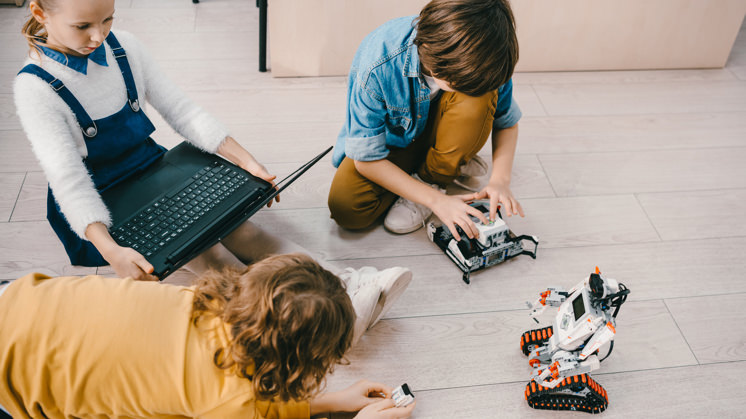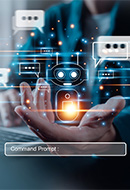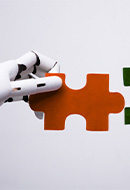Educational Robots
Do you know how educational robots can help your children to develop?
R&D Informatics Youth Training
Educational robots enable students of all ages to become familiar with and deepen their knowledge of robotics and programming, while at the same time learning other cognitive skills. Find out how robots can help your children's education and which are the most popular among the wide range of robots available on the market.

The word robot was invented by Czech writer Karel Capek to designate the automata in his science fiction play R.U.R. (Rossum's Universal Robots), which premiered in Prague in 1921. A word coined by Capek from the Czech term robota, which refers to hard work.
Almost a hundred years later, automata have become part of our children's development and learning process. We refer to educational robots.
What is educational robotics?
Educational robotics — or pedagogical robotics — is a discipline designed to introduce students to Robotics and Programming interactively from a very early age.
In the case of infant and primary education, educational robotics provides students with everything they need to easily build and program a robot capable of performing various tasks. There are also more advanced — and more expensive — robots for secondary and higher education. In any case, the complexity of the discipline is always adapted to the students' age.
Educational robotics is included within the so-called STEM (Science, Technology, Engineering and Mathematics) education, a teaching model designed to teach science, mathematics and technology together and one in which practice takes precedence over theory.
How do robots help students?
Through play, educational robots help children develop one of the basic cognitive skills of mathematical thinking at an early age: computational thinking. That is, they help develop the mental process we use to solve problems of various kinds through an orderly sequence of actions.
Skills that children develop thanks to educational robots

-
Creativity and imagination
-
Pro-active spirit
-
Adapting to the future
-
Self-assessment of their own performance
-
Motivation for learning
-
Developing new ways of communicating
-
Critical thinking
-
Self-esteem
-
Learning from mistakes
-
Teamwork
Skills enhanced thanks to the use of educational robots.
As well as developing computational thinking, educational robots promote the development of other cognitive skills among children and young people:
-
Learning from mistakes: discovering that errors are not final but a source of new conclusions is a valuable lesson for the future.
-
Teamwork: the group challenge approach encourages socialization and collaboration.
-
Adaptation: because of the growing increase of automation and intelligent devices, becoming familiar with the use of robots will help children adapt to the world of tomorrow more easily.
-
Creativity: the search for solutions and the freedom to assign new functions to these robots stimulates imagination and creativity.
-
Self-esteem: achieving success in a new field improves students' self-awareness.
-
Pro-active spirit: in addition to boosting their self-esteem, success in one field stimulates them to take on new tasks in other fields.
-
Self-assessment: by being able to see the results of their actions instantly, without the need for an adult to tell them whether they have done well or badly, students learn to assess their own performance.
-
Practical applications: applying the mathematical or physical knowledge learned in school motivates children and young people to continue studying these subjects.
Other cognitive skills that are positively influenced by educational robots are responsibility, order and a more optimal development of spatial perception and relationships between objects.
Another important benefit of educational robots is that they teach children to become familiar with and learn basic programming concepts, a skill that is becoming more and more important every year. A revealing fact: according to the European Commission, by 2020 there will be 825,000 unfilled jobs in Europe due to a lack of computer science and ICT professionals.
In the case of secondary and higher education, more advanced educational robots help students deepen their knowledge of robotics and programming. Furthermore, high-cost humanoid robots, programmed to teach any subject, are also useful in classrooms because of their ability to capture students' attention and, in robotics and programming classes, they act as the perfect link between theory and practice.

What is Artificial Intelligence?
AI is set to bring about a revolution on a par with the Internet. Find out more about it.

STEM professionals
The acronym STEM education encompasses careers related to science and technology.

Robotisation of work
Robots will do many of the jobs that humans now do.
The most popular educational robots
Today there are many educational robots for children and young people. Among the most popular are:
-
Makeblock mBot: this is a robot with wheels designed to introduce children to robotics, programming and electronics. It is easy to assemble and easy to control thanks to Scratch-based software designed for children. Its compatibility with the Makeblock platform and its electronic parts based on the Arduino open-source ecosystem allow more experienced users to create more complex robots.
-
Robo Wunderkind: it consists in a set of blocks that the children can connect as they wish to build their own robot. Each block has a function identified with a colour (camera microphone, motion sensors...) and, after building their robot, the children can use an app to program it to react to certain noises, avoid obstacles or play music when someone approaches, among other functions.
-
OWI 535: it is a robotic arm suitable for young people aged 13 or over. It can lift objects weighing up to 100 grams and has a wide variety of movements on which students can program customizations. This robot is also recommended for vocational training cycles.
-
LEGO Mindstorms EV3: this is a robotics set that includes several sensors, three servomotors and over 500 LEGO Technic components, thanks to which students can create different robots capable of moving, shooting, crawling, etc. It is controlled via a simple and intuitive programming interface and is available in two versions: Home and Education. This robot is recommended for children over 10 years old.
-
NAO: it is one of the world's most popular educational robots. It is a 58-cm high humanoid robot that is constantly evolving. As well as two cameras and four microphones, it has a a great many sensors that allow it to interact with the environment in a similar way to humans. NAO can observe, listen, have conversations and teach any subject. Its faculties and several programming levels enable its integration into the learning process of students from age 5 up to university level.














